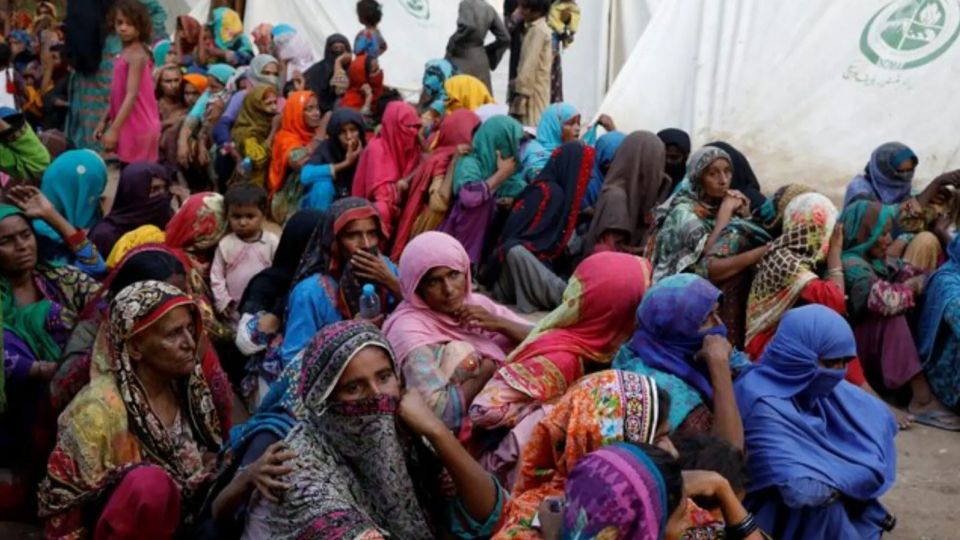November 27, 2025
ISLAMABAD – Pakistan has treated its population primarily as a narrow family planning concern rather than a development imperative.
As early as the 1950s, Pakistan’s policymakers recognised the negative impact of a rapidly growing population. The preamble of the country’s first Five-Year Plan (1955–60) warned that hopes for improved living conditions would falter if population growth continued unabated. Yet, despite this early recognition, Pakistan’s approach to population has been inconsistent, fragmented, and often politically constrained.
Today, the country faces mounting social, economic, and environmental pressures directly linked to its still-rising population.
The first comprehensive programme
In the early decades after independence, population concerns were acknowledged in planning documents, but policy orientation remained implicit. The first extensive attempt to address the issue came with the third Five-Year Plan (1965–70), which outlined a comprehensive strategy for family planning.
This culminated in 1965 with the launch of what was considered the first family planning programme in the region—a pioneering move. The programme focused primarily on lowering fertility, driven by the belief that rapid demographic growth would dilute the gains of socioeconomic development.
Political instability and shifting strategies
Without an explicit population policy, the 1970s and 1980s witnessed political instability, repeated strategic and programmatic shifts, preventing population management from being institutionalised as part of a broader national development agenda.
In the mid-1990s, former prime minister Benazir Bhutto took a bold step by launching the Prime Minister’s Programme on Family Planning and Primary Healthcare, employing community-based Lady Health Workers (LHWs) to provide services to women at their doorsteps.
The renowned demographer Anrudh Jain observed that population policies reflect political will—they require conviction and courage. Pakistan’s long delay in formalising such a policy underscores how politically sensitive and contentious this domain has been.
It was not until 2002—more than five decades after independence—that the country finally adopted its first explicit and comprehensive National Population Policy.
Ironically, just as the earliest family planning programme had been introduced under a military government in the 1960s, the first formal population policy also emerged under a military ruler.
The 2002 policy and provincial shift
The 2002 policy made crucial progress. It formally linked population dynamics to economic and social development, highlighting how unchecked growth undermined education, health, employment, and women’s empowerment. It set clear targets for fertility reduction and contraceptive prevalence.
In 2010, a second draft policy was prepared, but it could not be implemented due to the 18th Constitutional Amendment and the devolution of authority to the provinces. The provinces subsequently developed their own policies.
The National Action Plan and renewed commitments
A promising development in the past decade was the formulation of the National Action Plan on Population (2018), endorsed by the Council of Common Interests following a landmark Supreme Court suo motu notice on rising population growth.
The plan outlined demographic targets for 2025 and 2030 and called for stronger intersectoral coordination. Yet its implementation has suffered from the same historical problems: weak administrative structures, inadequate financing, and inconsistent political commitment. Most resources remain tied to salaries rather than development, and accountability mechanisms for service delivery are insufficient. As a result, the 2025 targets remain unmet.
Lagging behind regional transitions
Despite its early start in family planning, Pakistan’s demographic transition has lagged far behind that of East and Southeast Asia. The Asian Tigers embedded population stabilisation into their national development agendas—an approach long championed by Pakistan’s leading economist, Dr Mahbub-ul-Haq, who argued that reducing population growth must be integral to a broader human development strategy.
Pakistan, however, treated its population primarily as a narrow family planning concern rather than a development imperative. Demand-creation efforts were weak, with little emphasis on helping families understand the benefits of family planning for their own well-being.
Campaigns promoting small family norms failed to resonate. Access to services and reliable information remained limited, hindered by the health sector’s inconsistent role in service delivery.
Structural constraints and misplaced incentives
These shortcomings were compounded by structural factors. Family planning efforts were not linked to enhancing women’s autonomy, investing in girls’ education, or expanding economic opportunities for women—all essential drivers of fertility decline. Provinces, meanwhile, had little incentive to prioritise population planning because the National Finance Commission (NFC) award’s resource allocation formula rewarded larger population size. These weaknesses have long undermined Pakistan’s population stabilisation agenda.
This requires adequate resources, cross-ministerial coordination, strong local government engagement, community participation, and alignment of population goals with social protection, education reform, gender equality initiatives, and improved maternal and child healthcare.
Signs of a shifting narrative
There are, however, signs of progress. A new narrative on population is emerging, and efforts to integrate health and population welfare services are gathering momentum. Religious leaders have endorsed the concept of birth spacing as a life-saving intervention. Policymakers and elected officials increasingly acknowledge that stabilising population growth is essential for achieving the Sustainable Development Goals and meeting national and international commitments.
Ultimately, the success of any population policy lies in its ability to improve people’s lives and well-being. The challenge now is to translate this growing recognition into sustained, programmatic action so that Pakistan can finally align its population growth with available resources and move forward on a path of inclusive progress and lasting prosperity.


